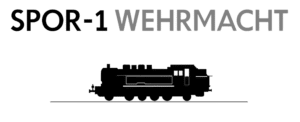During WWII, a staff company had the main task of supporting and assisting the division’s staff in planning, coordinating, and executing operations. The company was organized with a range of specialists who could contribute to effective leadership and tactical decision-making processes.
A typical staff company would include various specialized units, such as radio operators, signal troops, intelligence personnel, spies, and interpreters. The radio operators were responsible for maintaining communication links between the division’s different units and their higher command. The signal troops ensured encryption and decryption of communication exchanges.
I have recreated a staff company within a panzer battalion from April 1, 1944. The staff company consists of a total of 3 panzer companies, that consited og the following equipment and personnel.
- 3 officers, 38 non-commissioned officers, and 104 enlisted personnel, totaling 145 individuals.
- The personnel within each panzer company had access to a total of 61 rifles, 61 pistols and/or submachine guns, and 16 light machine guns (LMGs).
- 3 Panther tanks, 5 Panzer IV tanks, and 2 armored personnel carriers (Kfz. 251/8).
- 2 motorized anti-aircraft guns (flak guns), 3 trucks, and 12 smaller vehicles such as motorcycles.
The company was divided into the following groups:
- Staff Group
- Two radio and reconnaissance groups.
- Four reconnaissance units and pioneer groups
- Two anti-aircraft artillery groups for air defense purposes.
The reconnaissance groups were responsible for gathering and analyzing intelligence, reporting on enemy forces and positions to the chief of staff. This information was crucial for making decisions about operations and developing tactics. Interpreters were also important as they could assist with communication between the division’s personnel and any allied forces or civilian populations in occupied areas.
The staff company was also responsible for handling the logistics and supply of the division. This included transportation, vehicle and weapon maintenance, supply management, repair of damaged vehicles, and processing of prisoners and captured war materials.
During combat, the units of the staff company were often assigned tasks at various levels within the tactical operations. They could assist the commander and his staff at the operational element level or even within higher command structures. Their expertise and knowledge contributed to the overall operational efficiency and facilitated quick and accurate decision-making.
The staff companies played a crucial role in the Panzer divisions’ efforts to maintain mobility, organizational structure, and battlefield superiority. While their tasks were diverse, their primary focus was on maintaining an efficient communication network, gathering and interpreting intelligence, and assisting in the decision-making process. Their contributions were essential for the overall effectiveness of the Panzer divisions in combat.
The Herman Göring Staff train
Hermann Göring’s staff car was indeed a luxurious and impressive vehicle used as a means of transportation by Hermann Göring, a prominent Nazi leader and one of Hitler’s closest allies during World War II.
The staffcar I have recreated in a 1:32 scale model is built based on the original drawings and photographs of the completed vehicle, ensuring that it appears as accurately as possible to the original.
The staff car, was manufactured by various automobile producers, including Mercedes-Benz, Horch, and BMW. It was renowned for its impressive size and superior craftsmanship, reflecting the meticulous design and construction. The stabsvogn was considered a symbol of power and luxury, often used by high-ranking Nazi leaders like Göring to showcase their status.
The staff traincar was equipped with luxurious amenities typical for a vehicle of its class, including comfortable leather seats, air conditioning, and advanced sound systems. It was also armored for use in combat situations, featuring armored plates to withstand enemy fire.
The staff traincar, were frequently used by Hitler and other leading Nazis for transportation purposes during various areas of the war. They also served as command centers and meeting places for strategic discussions and important meetings. (If you look inside the staff vehicle, you can see that one is currently in operation)
After World War II, many of the German staff cars that were not destroyed were seized by the Allied forces as war booty. Today, some of these staff cars have been restored and are exhibited in museums around the world. One example is Herman Göring’s staff car, which is displayed in Berlin.
